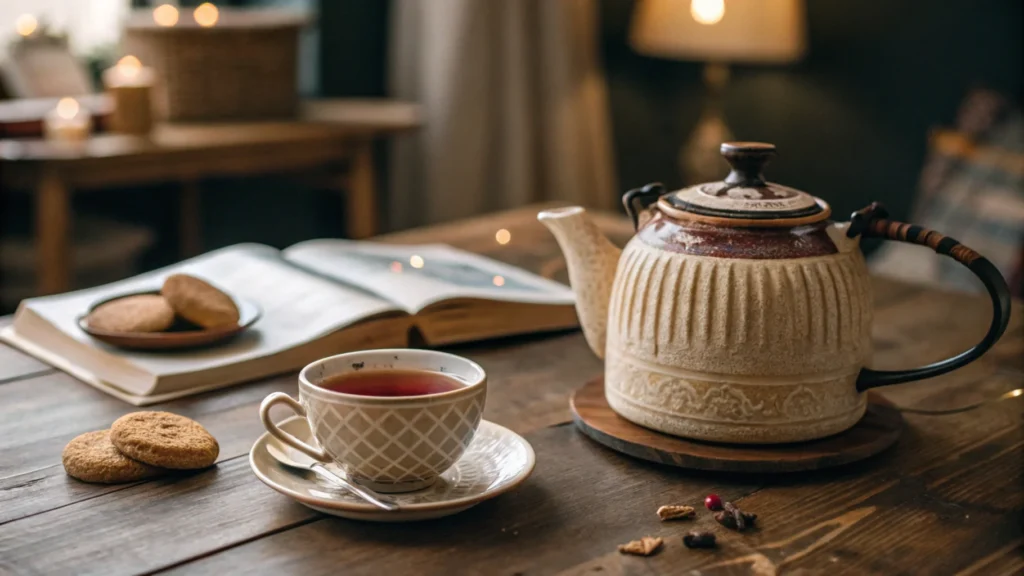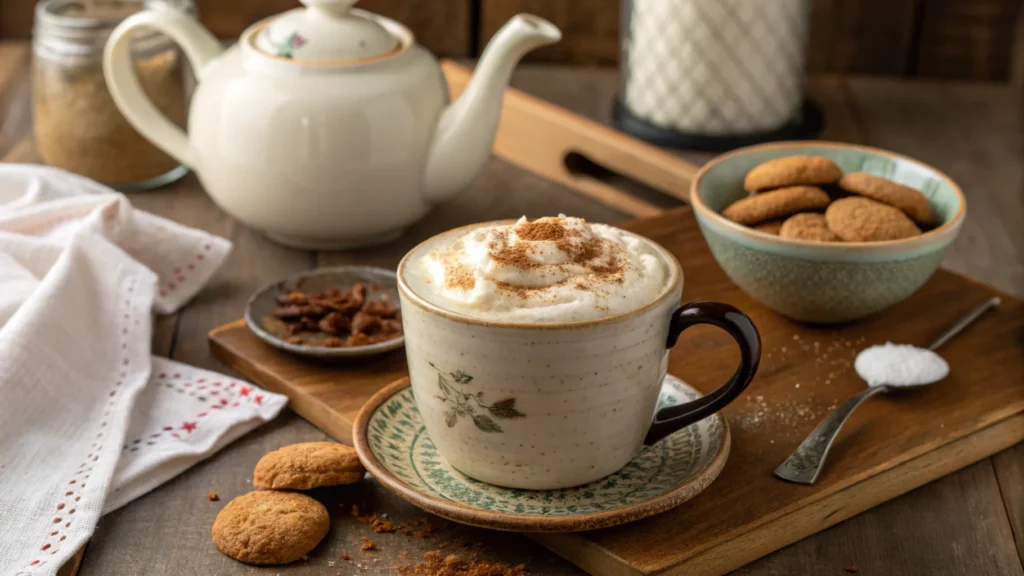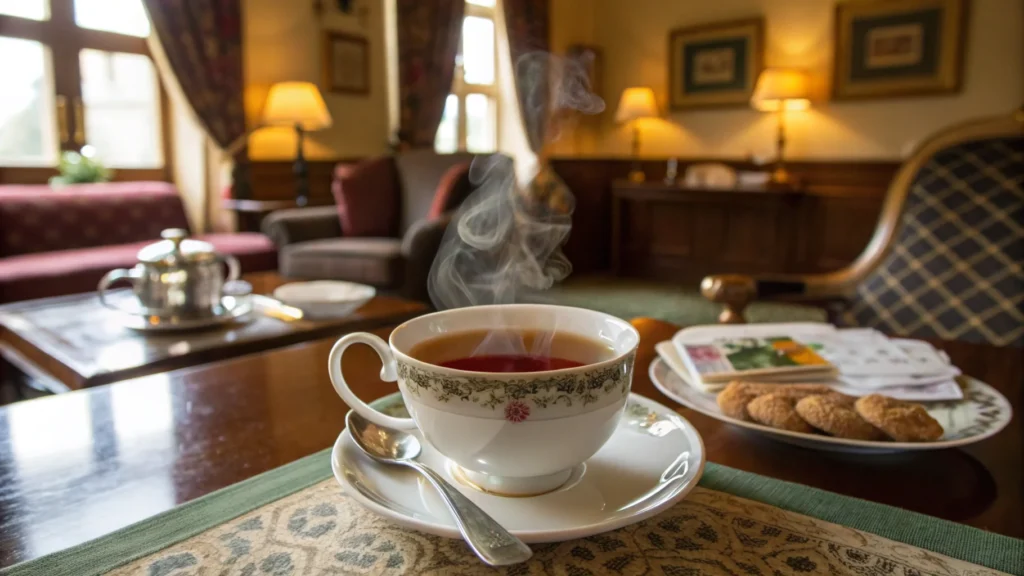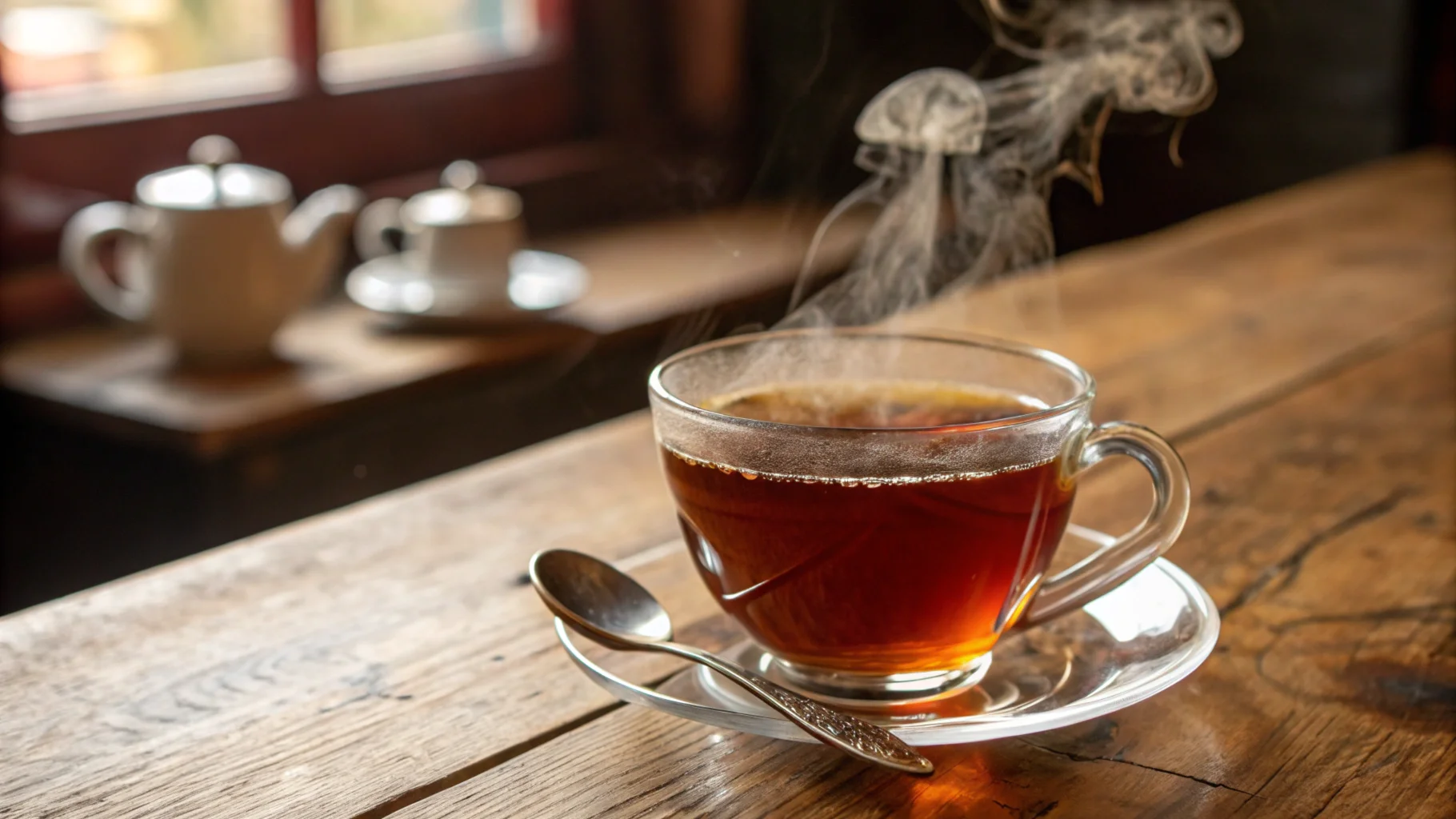Irish breakfast tea is more than just a drink—it’s a tradition, a cultural symbol, and a favorite way to kickstart the day for countless tea lovers. Known for its bold, malty flavor and deep color, this black tea blend is a staple in Irish households and beyond. But what makes it so special? In this article, we’ll explore the origins, characteristics, health benefits, and preparation methods of Irish breakfast tea. By the end, you’ll have all the insights you need to enjoy it to the fullest, whether you’re a seasoned tea drinker or a curious beginner.
Table of contents
What is Irish Breakfast Tea?
The Origins
The story begins with Ireland’s long-standing love affair with tea. Introduced in the 19th century, tea quickly became a daily ritual for Irish families. Unlike its English counterpart, Is typically a robust blend of black teas, with Assam from India forming the foundation. Over time, Ceylon and Kenyan teas joined the mix, creating a flavor profile that’s rich, full-bodied, and malty.
Interestingly, the term “breakfast tea” originated to describe a tea blend hearty enough to pair with a traditional morning meal. For the Irish, this meant a full fry-up, complete with sausages, eggs, and soda bread. The strong flavors of the tea perfectly complemented the hearty fare, solidifying its place in Irish culture.
Key Characteristics of Irish Breakfast Tea
What sets Irish breakfast tea apart? Its flavor profile is its hallmark. The blend is known for its bold, malty notes, derived from the Assam component, and a touch of briskness from Ceylon teas. The color is typically deep amber, signaling its rich, full-bodied nature.
Unlike lighter teas, Irish breakfast tea is often enjoyed with milk and sugar, which enhance its robustness and balance its slight astringency. The blend’s strength also makes it a versatile option, suitable for any time of day, not just breakfast. Whether you’re sipping it plain or with traditional accompaniments, Irish breakfast tea offers a unique and satisfying experience.

The Art of Blending
Primary Ingredients
The magic of Irish breakfast tea lies in its blend. At its core, this tea is a combination of black teas, with Assam from India taking center stage. Assam tea contributes its signature malty flavor and deep color, giving the blend its boldness. Often, it’s paired with Ceylon tea, which adds a touch of brightness and briskness to balance the richness of Assam.
Over the years, some blends have included Kenyan and Keemun teas to add subtle variations. Kenyan teas bring a lively character with fruity undertones, while Keemun adds depth and a hint of smokiness. Together, these teas create the robust, full-bodied experience that defines Irish breakfast tea.
Traditional Methods of Preparation
Preparing Irish breakfast tea is an art, but it’s not complicated. Start by choosing high-quality tea, whether loose-leaf or in bags. Use fresh, boiling water to extract the fullest flavor. For loose-leaf tea, measure about one teaspoon per cup, letting it steep for 3–5 minutes, depending on your preferred strength.
Traditionally, Is enjoyed with milk and sugar. Adding milk softens its boldness, while sugar enhances its natural sweetness. Serve it alongside a hearty breakfast, and you’ll understand why it’s been a morning staple for generations.
Benefits
Rich in Antioxidants
Like other black teas, Irish breakfast tea is packed with antioxidants, particularly polyphenols. These compounds help fight free radicals in the body, reducing oxidative stress and potentially lowering the risk of chronic diseases. Drinking Irish breakfast tea regularly may support heart health and improve overall well-being.
The Assam component in the blend is especially rich in catechins, a type of antioxidant known for its anti-inflammatory properties. Combined with Ceylon or Kenyan teas, the blend offers a powerful boost of health benefits with every cup.
Energy Boost and Mental Alertness
Thanks to its caffeine content, Irish breakfast tea provides a natural energy boost without the jittery effects of coffee. This makes it an excellent choice for those who need a morning pick-me-up or a mid-afternoon lift. The caffeine also promotes mental alertness, helping you stay focused throughout the day.
Compared to coffee, Irish breakfast tea has a smoother energy release, thanks to the presence of L-theanine, an amino acid that promotes relaxation and focus. This combination creates a perfect balance of energy and calm, making it an ideal beverage for productivity and wellness.
Cultural Significance
A Tradition in Irish Households
In Ireland, tea isn’t just a drink—it’s a cherished ritual that brings people together. Irish breakfast tea holds a special place in this tradition. Whether served at breakfast, shared during a mid-morning break, or offered to guests, this bold, malty tea is an integral part of Irish hospitality. Its robust flavor complements traditional Irish fare, such as soda bread and hearty stews, making it a staple in daily life.
For centuries, Irish breakfast tea has symbolized comfort and warmth, often enjoyed around the kitchen table. It’s more than just a beverage; it’s a moment to connect, reflect, and savor simple pleasures. This cultural significance has helped the tea maintain its popularity, even as modern coffee culture grows.
Around the World
The popularity of Irish breakfast tea extends far beyond Ireland’s borders. Globally, tea lovers appreciate its bold flavor and versatility. Brands like Barry’s and Bewley’s have introduced this traditional blend to international markets, where it’s celebrated for its quality and distinctive taste.
For those looking to try a creative twist on classic teas, explore Earl Grey Cookies for a unique tea-pairing idea.

Brewing the Perfect Cup
Recommended Water Temperature and Steeping Time
The perfect cup of Irish breakfast tea starts with attention to detail. Use freshly boiled water at around 200°F to maximize flavor extraction. For loose-leaf tea, measure one teaspoon per cup and steep for 3–5 minutes. If using tea bags, follow the same steeping guidelines. Avoid over-steeping, as it can make the tea too bitter.
The strength of Irish breakfast tea allows it to pair beautifully with milk and sugar, which round out its bold, malty flavor. Experiment with your brewing time to find the balance that suits your taste.
Pairing Irish Breakfast Tea with Food
Irish breakfast tea is a versatile drink that pairs well with a variety of foods. Traditionally, it’s served with breakfast items like toast, eggs, and sausages. Its boldness also complements sweet treats like scones, shortbread, and tea cakes.
For those who enjoy exploring recipes, pairing Irish breakfast tea with baked goods, such as Pumpkin Banana Loaf, adds a delightful twist to any tea time.
Comparing Irish Breakfast Tea to Other Breakfast Teas
Irish vs. English Breakfast Tea
One common question among tea enthusiasts is how Irish breakfast tea compares to English breakfast tea. While both are hearty blends designed to complement a morning meal, there are notable differences. Irish breakfast tea is typically bolder and maltier, thanks to its Assam-dominated blend. In contrast, English breakfast tea often incorporates a higher proportion of Ceylon tea, giving it a lighter, more brisk flavor.
Additionally, Irish breakfast tea is known for its deep amber color and robust strength, making it a favorite for those who enjoy their tea with milk and sugar. English breakfast tea, on the other hand, tends to be more versatile, appealing to those who prefer a lighter brew or enjoy their tea plain.
How Scottish Breakfast Tea Stands Out
Scottish breakfast tea, another member of the breakfast tea family, takes boldness to the next level. Its smoky undertones and darker color distinguish it from both Irish and English blends. While Irish breakfast tea balances strength with malty richness, Scottish breakfast tea often leans towards a stronger, more astringent flavor.
For tea lovers who enjoy experimenting, trying all three blends—Irish, English, and Scottish breakfast teas—can be a delightful journey into the world of black teas. Each has its unique charm, offering something for every palate.
How to Choose the Best Irish Breakfast Tea
Evaluating Quality
When selecting Irish breakfast tea, quality matters. Start by looking for blends that highlight Assam and Ceylon teas as primary ingredients. Loose-leaf tea is often considered superior to tea bags because it allows the leaves to unfurl fully, releasing their rich flavors. However, high-quality tea bags can also deliver a satisfying brew.
Pay attention to the tea’s aroma and color. Fresh, high-quality tea should have a vibrant scent and a rich, uniform appearance. If the tea looks dull or lacks aroma, it may have lost its freshness.
Understanding the Role of Packaging
The way tea is packaged can significantly impact its flavor. Airtight containers or foil-sealed bags help preserve the tea’s freshness, protecting it from light, air, and moisture. If you’re buying in bulk, consider transferring your tea to a sealed container to maintain its quality.
When exploring different brands of Irish breakfast tea, try samples from trusted names like Barry’s or Twinings. Finding the right blend can elevate your tea experience, ensuring you enjoy the perfect cup every time.

Exploring Recipes
Making Tea Lattes
A tea latte is a delightful way to enjoy this tea with a modern twist. Start by brewing a strong cup using two teaspoons of loose-leaf tea or two tea bags. Steep for 4–5 minutes to maximize the bold flavors. While the tea steeps, warm a cup of milk and froth it using a whisk or frother for a creamy, velvety texture.
Combine the brewed tea with the frothed milk in a large mug. For extra flavor, sweeten with honey or sugar, and top it off with a sprinkle of cinnamon or nutmeg. This latte is perfect for chilly mornings or as a comforting treat anytime you need a little pick-me-up.
Baking with Tea
For bakers, this tea can bring a rich depth of flavor to desserts. Infuse the tea into your batter by steeping the leaves in warm milk before using it in recipes for cakes, cookies, or scones. The malty richness pairs beautifully with vanilla and chocolate, adding a sophisticated twist to classic baked goods.
A fun idea is to bake tea-infused shortbread cookies. Grind the tea leaves into a fine powder and mix them into the dough for a subtly spiced flavor. These cookies are an excellent pairing for a freshly brewed cup, making tea time extra special.
FAQs
Is It Stronger Than English Breakfast Tea?
Yes, this tea is generally stronger than English breakfast blends. Its bold flavor and malty profile come from the high proportion of Assam tea in the blend. This strength makes it a popular choice for those who prefer a robust cup, especially with milk and sugar.
Can It Be Enjoyed Without Milk?
Absolutely! While traditionally served with milk, its rich flavor can be appreciated plain or with a slice of lemon. For a lighter experience, brew the tea for a shorter time and enjoy it without any additions.
What is the Best Time of Day to Drink It?
Although it’s named for breakfast, this tea can be enjoyed at any time of day. Its energizing caffeine content makes it ideal for mornings or a mid-afternoon pick-me-up. However, if you’re sensitive to caffeine, you may want to enjoy it earlier in the day to avoid disrupting your sleep.
Conclusion
This tea is more than just a morning beverage; it’s a tradition steeped in history and culture. Known for its bold, malty flavor and robust character, it has earned its place as a beloved staple in households worldwide. Whether enjoyed plain, with milk and sugar, or as part of a creative recipe, this tea offers a versatile and satisfying experience.
From its origins in Ireland to its growing global popularity, this tea continues to captivate tea lovers with its rich taste and energizing qualities. Its unique blend of Assam, Ceylon, and sometimes Kenyan or Keemun teas makes every sip a celebration of flavor and tradition. So, whether you’re starting your day or taking a relaxing tea break, a cup of this tea is always a good idea. Cheers to this timeless classic!

